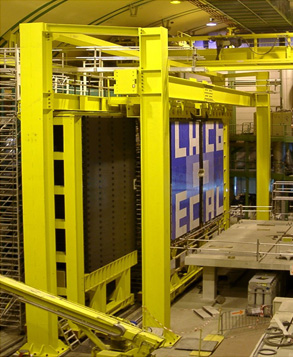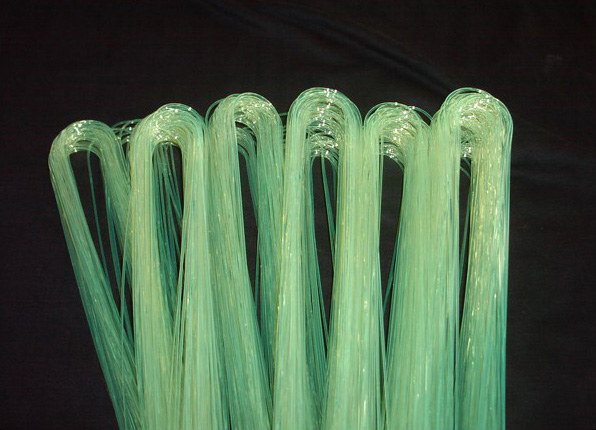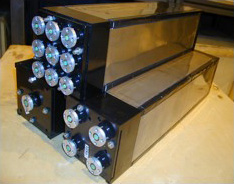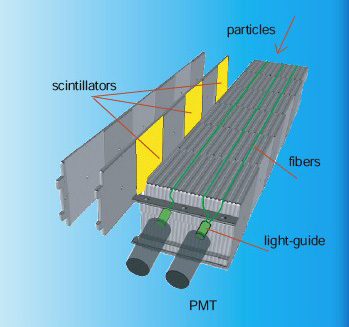The main purpose of the LHCb calorimeter system is to trigger on electrons, photons and hadrons. It will also provide energy and position measurements of the particles produced in their angular acceptance, which are used in offline event analysis. Furthermore, the electromagnetic calorimeter will measure photons and neutral pions in association with the hadronic calorimeter.

The calorimeter system consists of several layers: the Scintillating Pad Detector (SPD), the Pre-Shower Detector (PS), the ‘‘shashlik’’-type Electromagnetic Calorimeter (ECAL), and the scintillating tile iron plate Hadron Calorimeter (HCAL).
The SPD determines whether particles hitting the calorimeter system are charged or neutral, while the PS indicates the electromagnetic character of the particle (i.e. whether it is an electron, if charged, or a photon, if neutral). They are used at the trigger level in association with the ECAL to indicate the presence of electrons, photons, and neutral pions.

The SPD and PS consist of scintillating pads with a thickness of 15 mm, interspaced with a 2.5 X0 lead converter. Light is collected using wavelength-shifting (WLS) fibers. Almost four turns of fiber are inserted and glued in the round groove made in the square pad, and both ends of the WLS fiber are used to transmit the light to multi-anode photomultipliers (MAPMTs) located at the periphery of the detector. SPD and PS both contain about 6000 pads, each of which is equipped with an embedded individual light emitting diode (LED). The pads are driven by the pulsing network distributed throughout the detector surface.

The ECAL employs ‘shashlik’ technology of alternating scintillating tiles and lead plates. The cell size varies from 4 x 4 cm in the inner part of the detector, to 6 x 6 cm and 12 x 12 cm in the middle and outer parts. The cell granularity corresponds to that of the SPD/PS, aiming at a combined use in γ/e separation. The overall detector dimensions are 7.76 x 6.30 m, covering an acceptance of 25 mrad <θx < 300 mrad in the horizontal plane and 25 mrad <θy < 250 mrad in the vertical. Light is detected by 10-stage photomultipliers (Hamamatsu R7899-20) with an individually regulated high voltage base of Cockcroft-Walton type.

The HCAL is positioned behind the ECAL. Its internal structure consists of thin iron plates interspaced with scintillating tiles arranged parallel to the beam pipe. Like ECAL, the inner and outer parts of the calorimeter have different cell dimensions – 13 x 13cm and 26 x 26cm, respectively. The structure of the HCAL has the following features: in the lateral direction tiles are interspaced with 1 cm of iron (matching with the radiation length X0); while in the longitudinal direction the length of tiles and iron spacers corresponds to the hadron interaction length λI in iron. Light is collected by wavelength-shifting fibers running along the detector towards the back side where the PMTs are housed. Three tiles arranged in depth are in optical contact with each 1.2 mm diameter Kuraray Y-11(250)MSJ fibre. The total weight of the HCAL is about 500 tonnes.
